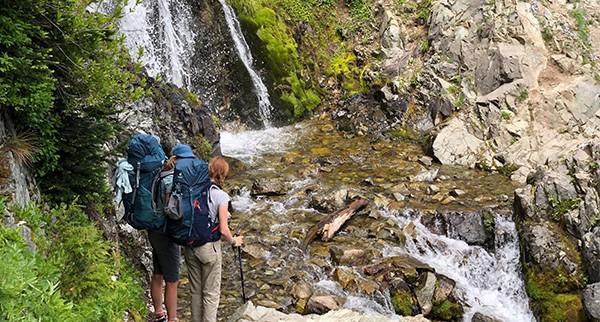Water: From the Top of the Mountain to the Top of My Mind
by Sophie Beckham, Senior Manager, Natural Capital Stewardship, International Paper

Originally published on LinkedIn
According to new data from the World Resources Institute, 17 countries – home to a quarter of the world’s population – face “extremely high” levels of water stress. While many of us may be unfamiliar with water stress, it is a real and growing threat across the world, including in parts of the US, Europe, and Brazil. A recent family trip reminded me of the day-to-day luxury of living with easy access to clean water.
As my family hiked through a beautiful and pristine wilderness area in Washington this summer, we were awed by the abundant wildflowers and waterfalls. Obviously, drinking clean water on a high alpine trail required more than simply turning on a faucet to fill up a glass. My kids took turns using our small water filter to purify our drinking and cooking water. Needless to say, our water consumption as a family plummeted from the US average of 400 gallons per day to about 4 gallons a day.
After five days of backcountry living, we made our way back down the Columbia River Gorge, following what is the fourth largest river in North America on its way to the Pacific Ocean. With a drainage basin the size of France, the Columbia River serves many purposes: a transportation route, a source of agricultural irrigation, a recreational mecca for windsurfers and anglers, habitat to salmon and a source of 44% of the country’s hydroelectric power generation.
The experience of tracing mountain streams to the mighty Columbia River was a personal reminder of peoples’ dependence on water resources for basic needs, and to make many of the products we use every day. As one of the world’s leading producers of fiber-based packaging, pulp and paper, International Paper is a large water user, and we have a responsibility to be a good steward of the resource in our operations and communities.
As we approach 2020 and begin looking toward 2030, we are evolving our strategy from water management to water stewardship to improve the long-term sustainability of the unique water resources where we live and work.
That’s why we have joined the World Resources Institute’s Aqueduct Alliance, a coalition of companies, governments and foundations at the cutting edge of water stewardship, to leverage the group’s guidance, insight and best practice sharing to inform our own strategy for water stewardship.
And that’s why we have used the Natural Capital Coalition’s Natural Capital Protocol to inform our own water valuation and usage decisions, which I had the pleasure of speaking about to those assembled at World Water Week in Stockholm in August.
At World Water Week, the trending theme was diversity and inclusion and how that relates to water needs around the world. The conference itself represented tremendous global diversity, mirroring the reality of water challenges that impact diverse peoples all over the world. It reminded me that as International Paper shapes our local water stewardship plans, they will need to be as unique as the people in the communities where we live and operate – a challenge our team is eager to take on.

